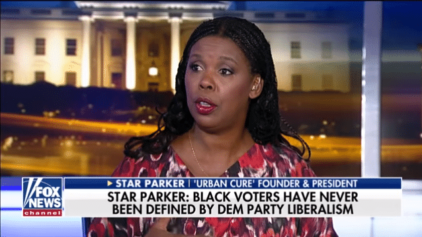While the statistics on young black males in the U.S. are alarming, their plight has been receiving increased funding and attention from the philanthropic community across the country as a number of groups and wealthy donors such as New York City Mayor Michael Bloomberg and George Soros have come to realize that the fate of the entire nation is intimately connected to the progress of black males.
Two important reports by philanthropic groups dedicated to improving the lot of black men have just been released, adding a measure of hope to the gloomy and depressing tone that normally accompanies media reports on the state of black men.
Both of the reports were made possible by the efforts of George Soros’ Open Society Institute and its four-year-old Campaign for Black Male Achievement. Shawn Dove, manager of the Campaign for Black Male Achievement, said it is essential for the nation to direct resources at this group because black males are “canaries in a coal mine,” showing the country the problems the rest of the population will soon be experiencing.
“We do not want a future America where all of our families, regardless of race, suffer high rates of incarceration, homicide, high school dropout, and unemployment,” Dove said. “This is why philanthropic investments in strategies to address the myriad challenges confronting black males will help ‘to lift all boats’ for underserved, vulnerable, and marginalized people, ensuring a brighter, stronger, and more equal and open society for us all.”
One of the reports, “Challenging the Status Quo,” also partially commissioned by the Congressional Black Caucus, shows that there are many incorrect myths about the status of black men in the U.S. that act to perpetuate negative stereotypes about this population.
The other report, “Where Do We Go From Here?,” produced by the Foundation Center and commissioned by the Campaign for Black Male Achievement, shows that the amount of foundation funding directed at solving the problems of young black males has been steadily rising and has begun to make an impact in cities across the country, but much more of a sustained funding structure needs to be established.
Soros, 82, is a Hungarian-born billionaire and investment titan who has given away $8 billion since 1979. In addition to directing the resources of the Open Society Institute toward black males, Soros also joined together with Bloomberg last year to each donate $30 million to address the problems of black and Latino men in New York City. In “Where Do We Go From Here?” Soros offered a window into the thinking that is motivating him to focus so many resources on black males. He listed many of the alarming statistics related to black males in New York—50 percent don’t finish high school; poverty rate 50 percent higher and unemployment rate 60 percent higher than white and Asian males; seven times more like to have an incarcerated parent; 30 percent caught up in criminal justice system.
“This squandering of human capital is a disgrace,” Soros said in the afterword of the report. “New generations of African American boys and young men need not become such statistics. With rigorous academic instruction, so many of them can master so much. They need pre-school and afterschool programs. High school boys and junior college young men need internships to expand their assumptions about the realm of the possible in terms of the future—and their future careers. They need mentors and counselors who will prepare some for college and the professions, while helping others to develop marketable skills that will lead, after graduation, to satisfying, well-paying jobs.”
Buoyed by the successes the Open Society Institute saw in Baltimore with programs beginning to improve the outcomes for black males, Soros said he is committed to expanding opportunities for black boys and men—and also motivating other philanthropists and foundations to do the same to “reverse the serious damage inflicted over many years of systemic injustice.”
“This is a generational problem. It demands a longterm commitment,” Soros said.
In “Where Do We Go From Here?” the researchers found that annual funding designated for black males has been rising steadily, from $10 million in 2003 to $29 million in 2010. Education is the top funding priority, garnering 40 percent of the grant dollars between 2008 and 2010, while California, New York and Georgia are the top three states receiving foundation money explicitly designated for black males.
By far the most illuminating statistic in “Challenging the Status Quo” is the conclusion that black men are NOT underrepresented in the nation’s colleges. Black males make up 5.5 percent of all college students age 18 and over, which is proportional to the adult black male population in the United States, according to the report, written by Howard University education professor Ivory Toldson and University of North Carolina-Charlotte education professor Chance Lewis.
The authors say the myth that black males aren’t interested in education can be extremely damaging, as it leads teachers and counselors to direct them toward less rigorous academic pursuits, such as community colleges—which have notoriously lower completion rates because of the lack of resources directed toward the student body.
“The idea that black males are completely disaffected and beyond any reasonable efforts to remediate is an attitude that we frequently encounter when we train school leaders and educational administrators,” the authors wrote. “The cynicism and apathy among people who work with black boys are far more threatening to our future than the black male issues so ominously dramatized in the media.”

